In 1963, the Tiki Room sponsored by United Air Lines opened at Disneyland, enchanting a generation for whom the white sand beaches, volcanoes, tropical rainforests, luaus, and grass skirts of Hawaii were adventure incarnate.
In 1971, Walt Disney World’s version opened, now anchored by the Florida Citrus Growers and their colorful Orange Bird mascot. And believe it or not, it was in Orlando that the precursor to the Dole Whip took shape…
The Citrus Swirl (1971)

From the day it opened as a retail outlet of the Florida Citrus Commission, the Sunshine Tree Terrace and its jovial Orange Bird mascot offered something totally unique… In fact, Disney historian Michael Crawford discovered a March 1972 article in the Los Angeles Times highlighting the then-new park’s focus on oranges. Among a list of citrus-themed treats to be found around in every single land, a most peculiar treat is mentioned:
“As could be expected, orange juice and grapefruit juice are featured on the [Sunshine Tree] Terrace menu, but other specialties include tangerine soft freeze, a sherbet-like mixture of orange juice, tangerine concentrate, tangerine oil and sweetener.”

Yes, back in 1971, Magic Kingdom took its first step into the world of frosty tropical treats with… the Citrus Swirl. A ribbon of slushy, semi-frozen orange juice folded throughout vanilla soft serve, the Citrus Swirl was a beautiful balance of Floridian flavor… a perfect swirl of silky, sweet and creamy vanilla with the punch of crystalline, tart orange juice that served as an Opening Day signature snack and an orange ambassador for visitors to the “Vacation Kingdom of the World”! Put simply, the Citrus Swirl was sunshine in a cup.
But more to the point, the Citrus Swirl was the original complement to the Tiki singalong; one custom-made for Florida’s unique citrus-centered celebration of (and tropical twist on) Tiki culture. Even as things at Magic Kingdom “sped up” (the beginnings of today’s FastPass+-fueled, pre-planned, MagicBand hyper-speed touring), the Tropical Serenade and its Citrus Swirl offered a retro-relaxing visit to the Islands; a place where to sit back, relax, and savor the flavor of the tropics.
At Disneyland, meanwhile, guests still had only plain ole’ pineapple juice to sip during their singalong… But that would soon change…
A match made in Hawai’i (1976)
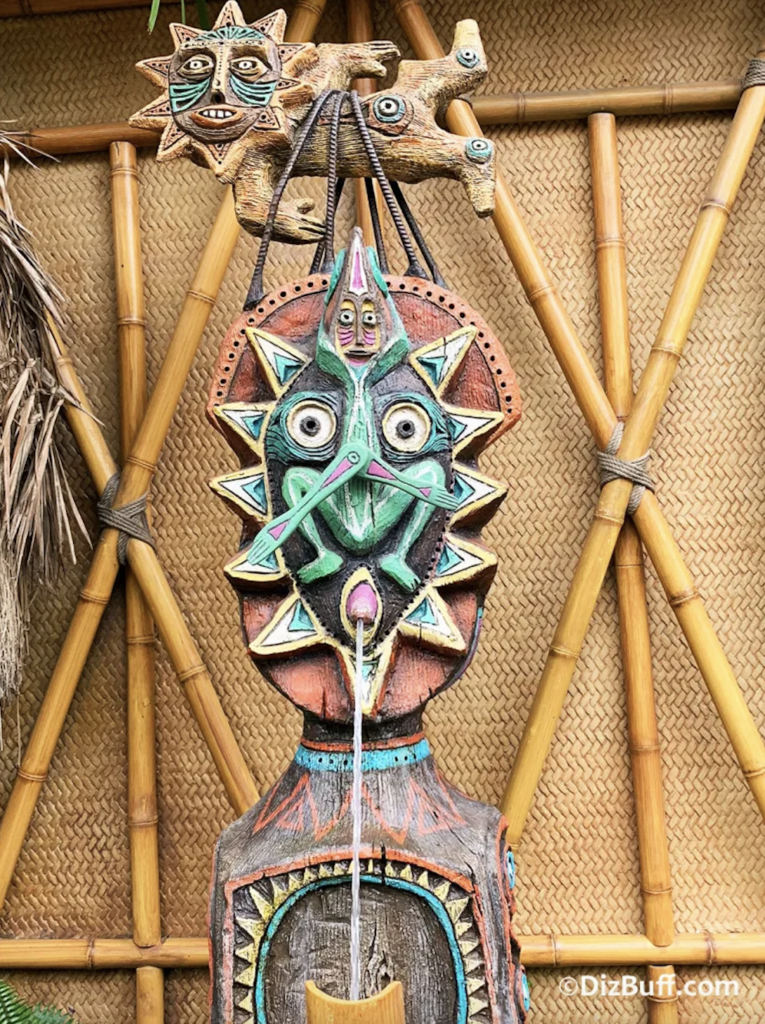
United Air Lines ended its official relationship with Disneyland and the Tiki Room in 1976. (A competitor, Eastern Air Lines, had been selected as Walt Disney World’s official airline, sponsoring Magic Kingdom’s Lost Legend: If You Had Wings). As fans of Epcot’s Lost Legends know well, sometimes the end of a sponsor can spell the end of an attraction entirely… especially when its cultural capital is waning…
But the Enchanted Tiki Room wasn’t without underwriting for long.
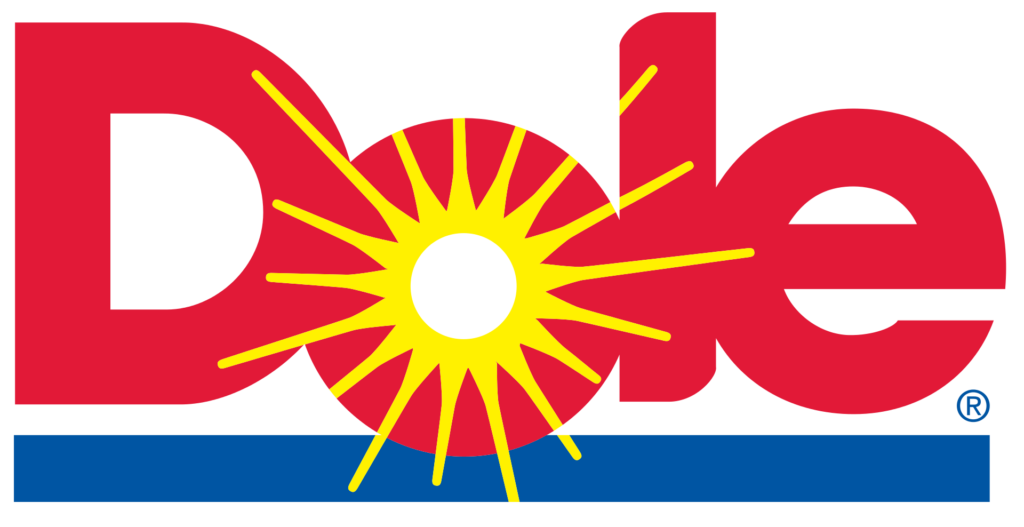
Yes, at last our story returns to the not-so-secret star: Dole. As you may remember, after James Dole’s exit during the Great Depression, the Dole company was wholly bought out by another Hawaiian company, Castle & Cooke. It turns out that that new parent company had spent much of the ’50s, ’60s and ’70s acquiring other “produce producers,” like the New Orleans-based Standard Fruit Company and California-based Bud Antle, Inc. vegetable company. (The entire, combined operation would only be unified under the more recognizable Dole brand as The Dole Food Company in 1990.)
With United having flown the coop, in 1976, Castle & Cooke’s Dole brand stepped in to overtake sponsorship of the Enchanted Tiki Room in Disneyland. (A relationship that remains to this day, 45 years later.) It’s easy to imagine that James Dole himself would’ve adored the Tiki Room had he lived long enough to see it…
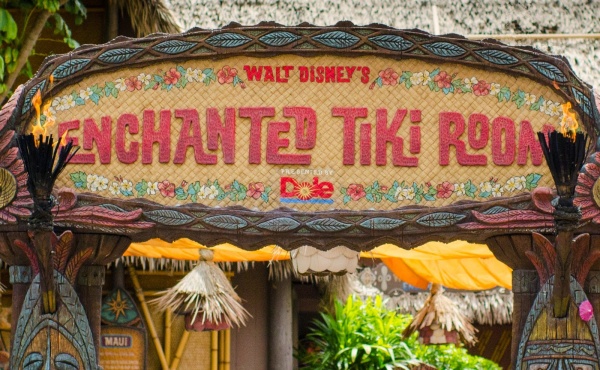
After all, there’s a beautiful kind of symmetry to “The Enchanted Tiki Room Presented By Dole,” isn’t there? At long last, two icons of the era had found each other, each an embodiment of the vibrant colors, soft sounds, and sweet flavors of the South Seas. As it was put in Dole’s then-added pre-show video:
“It’s always springtime in Hawai’i. With a rainbow of colors continually in bloom, visitors can appreciate the beauty of these islands anytime. And there’s something else they can enjoy, too. Pineapple – the flavor of Hawai’i. Grown year round and harvested by hand, it’s transported to the Dole cannery – the largest pineapple cannery in the world. The fruit is out of its shell and into the can in minutes...”
To that end, Dole’s 1976 sponsorship of the Disneyland attraction also afforded them an outlet via the Tiki Juice Bar. Believe it or not, for its first full decade in charge, Dole’s little Hawaiian hut still offered only pineapple juice and fruit spears… Then something a little sweeter found its way to the Tiki Room’s lanai.
Dole Whip (1986)
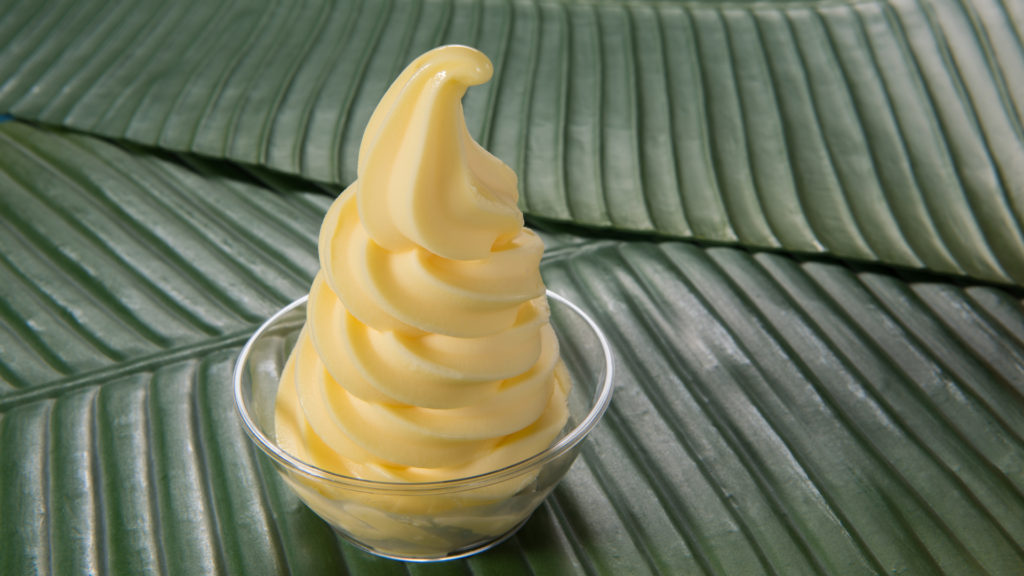
Voila…! Frosty, sweet swirls weightlessly and delicately dispensed as if from a pastry piping bag; tropical ribbons poised atop a hollow interior; the sugary and tart taste of pineapple in a silky and creamy combination; that melted peak, curled over like it learned from the Matterhorn itself…
Though Dole Whips today feel as foundational to Disneyland as Sleeping Beauty Castle, it wasn’t until 1986 – more than thirty years after the park’s opening, more than twenty years after the Tiki Room’s debut, and ten years after Dole’s sponsorship – that the Hawaiian pineapple company’s namesake treat made its way to California’s Tiki Juice Bar.
(That same year, the end of the Florida Citrus Growers sponsorship meant the Orange Bird and Citrus Swirl flew the coop in Florida; most hypotheses indicate the Dole Whip made the jump there at the same time, co-debuting on both coasts.)

The rest, as they say, is history. To be fair, you can imagine how first-timers or tourists might spot that that E-Ticket-esque, hundred-person queue weaving through Adventureland ends in standard soft serve machines (no pun intended) doing out a mere cup of $5 pale-yellow soft serve and wonder aloud, “That’s it?”
It’s true: for the uninitiated, it can be difficult to describe what makes the Dole Whip such an icon of Disney Parks. Despite the built-up mythos and fandom that surrounds the piled-high pineapple treat, it is quite literally “just” pineapple-flavored soft serve offered solo or as a float atop Dole pineapple juice. Even then, it’s merely pineapple-flavored since it doesn’t include… well… pineapple. (Instead, it arrives as a powder mix with water added on-site, activating artificial flavors that include “pineapple juice powder”.)
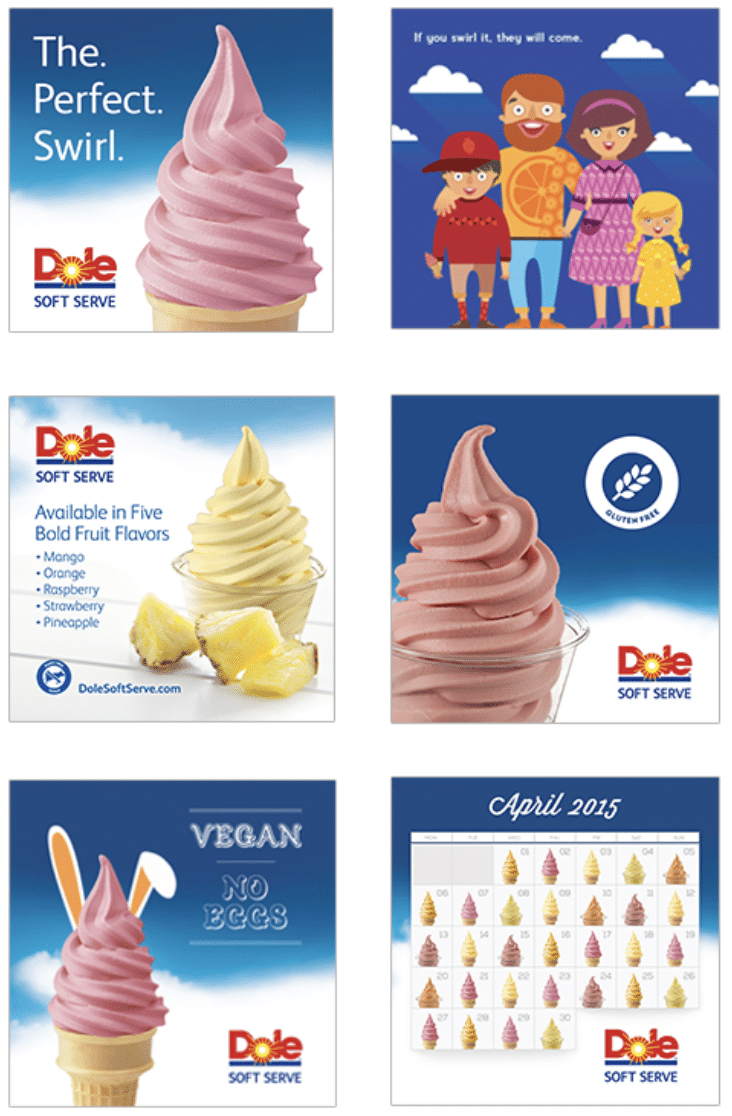
Maybe it’s the “exclusivity” of the Dole Whip that makes it such a sought-after treat! …Except, it’s not at all exclusive. After its success at Disneyland, the Dole Whip was exported across the Pacific back to the Dole Plantation attraction. That may be a single, forgivable exception to Disney’s exclusivity… but it’s not even the start. In the ’90s, the product was added to Dole’s catalogue list available wholesale as “Dole Soft Serve”, which soon exploded into a flavor-full line of frozen desserts.
In 1997, Dole licensed the product to Kent Precision Foods, who continues to sell Disneyland-identical “Dole Soft Serve” mix to Six Flags, yogurt shops, rest stops, ice cream stands, gas stations, boardwalks, and more across the country. In addition to pineapple, Dole Soft Serve flavors offered today include mango, lemon, lime, orange, raspberry, strawberry, and watermelon. The gluten-free and (since 2013) vegan powder product is so widely available, if you’ve got a soft serve machine, you can buy five pounds of mix on Amazon right now for the cost of five Dole Whips!
But that’s exactly the point… even if a Dole Whip from Disneyland is theoretically identical to a Dole Soft Serve at Menchies, it’s not the same at all, is it?

Sure, the Dole Whip may “just” be soft serve; it may “just” be from a powder mix; it may not be “exclusive” at all; it doesn’t even have any pineapple! Yet the Dole Whip is a legend in Disney Parks precisely because it’s more than the sum of its parts. Read on as we examine three reasons we think the Dole Whip has become immortalized in the Disney Parks canon…


